What should we be most afraid of? Death, according to some, is the most terrifying thing that exists. The thought that your life will end one day can motivate you to accomplish things you would not normally do. But we all know that death is unavoidable, and most of us attempt to avoid it as much as possible. Should we be concerned about something in particular? Many of us have queer fixation objects that terrify the living daylights out of us. Bats were a source of terror for Bruce Wayne.
Personally, I despise heights and refuse to reside in an apartment structure above the second floor. None of this, however, is half as scary to H.P. Lovecraft as the thought of existence itself, and the meaninglessness of it all. On this channel, we have talked about the King of Weird Horror previously, and for good reason.
Lovecraft had one of the most fascinating literary minds in history, despite his controversial viewpoints. Nearly a century after he first published his stories in the pulp magazine Weird Tales, his work continues to be scrutinized by literary critics and popular culture. The Cthulu Mythos is August Derleth’s collection of Lovecraftian lore, named after the author’s most well-known creation.
However, Lovecraft himself refers to his works as part of the larger “Yog-Sothothory,” which is the name of the video’s subject. He was created for his unpublished 1927 short story “The Case of Charles Dexter Ward,” which would be published after his death by Weird Tales. In Lovecraft’s iconic short story “The Dunwich Horror,” published in 1929, he made his first official appearance as the main antagonist.
And if you have read that story, you are well aware of The Lurker of the Threshold’s nefarious nature. Let us have a look at Yog-Sothoth – Explored, the Cthulu Mythos’ All-Knowing, All-Seeing, Terrifying Outer God.
Who is Yog-Sothoth; The Eater of Souls?
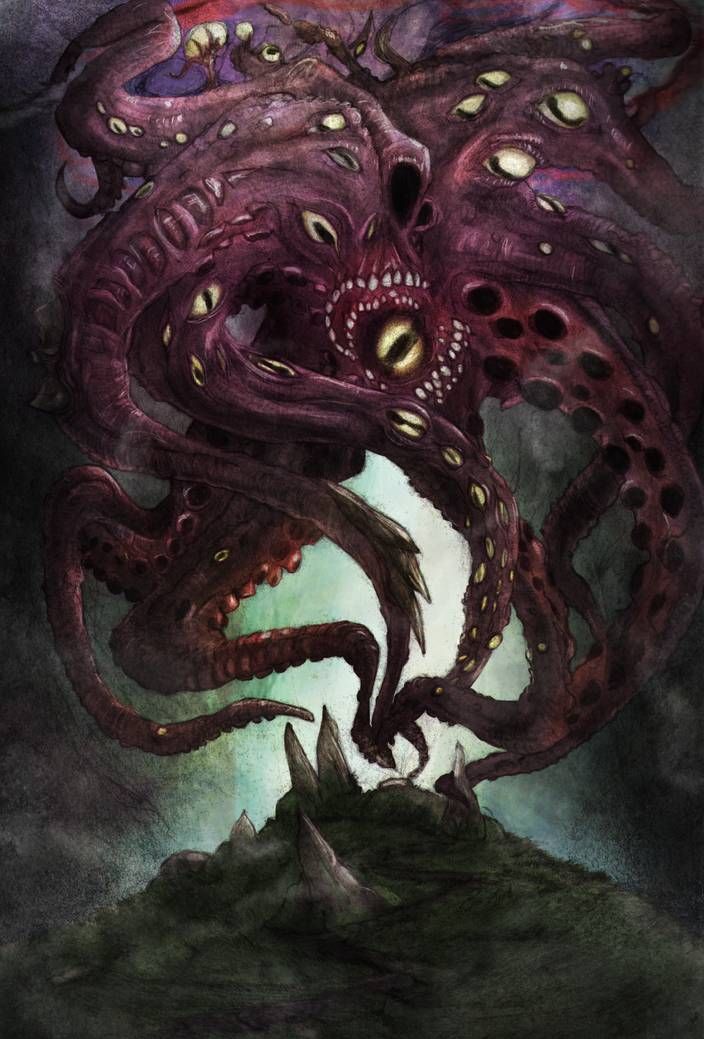
“Yog-Sothoth knows the gate. Yog-Sothoth is the gate. Yog-Sothoth is the key and guardian of the gate. Past, present, and future, all are in Yog-Sothoth. He knows where the Old Ones broke through of old, and where They shall break through again. He knows where They have trod earth’s fields, and where They still tread them, and why no one can behold Them as They tread.” – H.P. Lovecraft, The Dunwich Horror, 1929.
The Tree of Life is an ancient diagram that has been employed by mystics as far back as 9th century BC, Assyria. It was this esoteric structure that certain Jewish Kabbalists used to describe the 10 Emanations known as the Sephiroth; attributes through which Ein Sof reveals its infinite wisdom to a Kabbalist, as It continuously creates both the physical realm and the chain of higher, metaphysical realms.
But as scientist Isaac Newton’s experiments revealed centuries later, Life is based around the very concept of polarity. For every action, there is an equal and opposite reaction. And for all the good in this universe, there must exist the evil also to create some form of balance. In the Lurianic Kabbalah and Hermetic Qabalah, there exists an opposing interpretation that represents all that is evil and impure in the eyes of the Jewish faith.
This interpretation chooses to organize itself in the form of concentric circles, much like the Tree of Life. But where the Sephiroth aims to enlighten individuals the Qliphoth seeks to hoard that divine knowledge for itself, thus going against the very grain of Kabbalist mysticism.
It is possible that this representation of malevolence inspired Lovecraft to create Yog-Sothoth, as speculated upon by Daniel Harms & John Wisdom Gonce 3 in their book The Necronomicon Files: The Truth Behind The Legend. In reality, we might never know what inspired him to create the horrifying entity that is The Not-To-Be-Named One.
To call Yog-Sothoth unfathomable would be an understatement, even by Lovecraftian standards. In fact, we’ll let the man himself explain to you just how cosmic the scope of his existence is:
“It was an All-in-One and One-in-All of limitless being and self—not merely a thing of one Space-Time continuum, but allied to the ultimate animating essence of existence’s whole unbounded sweep—the last, utter sweep which has no confines and which outreaches fancy and mathematic alike.
It was perhaps that which certain secret cults of earth have whispered of as YOG-SOTHOTH, and which has been a deity under other names; that which the crustaceans of Yuggoth worship as the Beyond-One, and which the vaporous brains of the spiral nebulae know by an untranslatable Sign…” – Lovecraft and E. Hoffmann Price, “Through the Gates of the Silver Key”
This Outer God is the very embodiment of the Space-Time Continuum: He sees Past, Present & Future, all at once, all in the same, fleeting moment it takes for him to suck out every ounce of knowledge from what He has witnessed. His Presence touches every sentient being, across every timeline in the Multiverse, at the same time; and yet, so great is the scope of his existence that even the most intellectual of minds would crumble into madness at the sight of him.
The best anyone has managed to describe Yog-Sothoth’s physical appearance is as giant, luminescent, cosmic globes of which there are at least 13; Gomory, Zagan, Sydney, Eligor, Dutson, Dual, Scor, Algor, Sefton, Partas, Gamor, Umbra, and Anaboth. These spheres manifest themselves to His beholder in a constant state of transmutation, merging, growing tendrils and eyes, and breaking apart all in one instant; though this is, of course, a description contingent on the witness’s sanity.
Yog-Sothoth is, for all intents and purposes, one of the most-powerful Outer Gods to ever exist; second only, perhaps, to the ancient cosmic existence that is Azathoth. Over the millennia, several have sought knowledge from the One Who Knows It All; but every last one of them has since descended into lunacy, even the members of Yog-Sothoth’s ever-faithful followers from the Cult.
Though he has been locked outside of the Universe we exist in, he is ever-so-vigilant and is always influencing events taking place in it from his perch atop the Cosmos as the Key and the Gate that will open your eyes as to what lays beyond Existence as you understand it.
To please Yog-Sothoth could mean ever-lasting knowledge and ecstasy unlike you’ve ever known before, but cross him, and you will feel the unleashed extent of his primordial mirth; much like many of the characters that populate Lovecraft’s stories.
Yog-Sothoth Invocations and Appearances:
“Y’AI’NG’NGAH,
YOG-SOTHOTH
H’EE-L’GEB
F’AI THRODOG
UAAAH”
These are the words that first invoked the faceless terror of the being we know as Yog-Sothoth, though they wouldn’t be published until 1941. The Case of Charles Dexter Ward is a spine-chilling one not just because of his fate, but its horrifying aftermath. Dr. Marinus Bicknell Willet was visiting his institutionalized patient’s hometown in search of him after he escaped the asylum he was admitted to.
What he found was something much worse than a mentally challenged person holed up in his childhood home; in fact, it wasn’t even the person he thought he knew. James Curwen was the great-great-great-grandfather of Charles Dexter Ward; and also the man who was currently posing as him, thanks his resurrection at the altar of the Great Yog-Sothoth.
Being an omnipotent, omniscient God, The Opener of the Way had the power to bring a deceased spirit back to the realm of the living, provided their “essential salts” were used in accordance with the incantation we mentioned above. Charles Dexter Ward was unfortunate enough to be the descendent cursed with the task of bringing him back to life. He gathered up everything that biologically composed his grandfather’s physical form: bones, flesh, teeth, hair, marrow, and of course, blood.
After boiling everything and extracting the essential salts from his ancestor’s deceased body, Ward performed the incantation that would bring him back to life, and lead to his eventual demise. Dr. Willet was able to put an end to Curwen’s Minos-ian schemes by uttering a slight variation of the resurrection spell, turning his body back into dust. Yog-Sothoth would rear his head over the desolate, deprave, the dreary old town of Dunwich in the year 1929, in what is his first canonical appearance as a Lovecraft creation.
This time he was summoned by Old Whateley; a cattle-herder and dark sorcerer, who used his knowledge of the Necronomicon to summon the Mighty Yog-Sothoth. The eldritch horror proceeds to mate with Whateley’s slatternly albino daughter Lavinia. Their union leads to the birth of twin children. The first one was called Wilbur Whateley; a boy whose age-progressed as rapidly as he embraced Death. At 11 months, Wilbur could talk and he looked like a very hormonal 15-year-old at the age of 4.
Wilbur met an untimely death at the hands of a feral guard dog when he was trying to break into the Miskatonic University’s Library. Sadly for the town of Dunwich, he was the only thing standing between it and Its Horror. Wilbur’s twin brother would be the being, that men would call The Dunwich Abomination; an invisible monstrosity who was so horrifying to look at, a split-second glance drove one of Henry Armitage’s crewmates insane.
Armitage was able to bring Yog-Sothoth’s offspring to a stop before he summoned his Father for help, and many of Dunwich’s residents went looking for new pastures the very next day. It is believed that the entity that drove geologist William Dyer’s crewmate Danforth insane after their mysterious expedition to Antarctica was none other than Yog-Sothoth himself, who manifested as a mass of writhing tentacles engulfing the ancient city of the Elder Gods.
Randolph Carter had once ventured into the realm of the Outer Gods during his dalliance with Nyarlothep in the Dream-Quest of Unknown Kadath, but by the time Lovecraft wrote The Silver Key, Carter seemed to have lost his pair and was unable to enter his strange haunts once again.
A 30-year-old Carter, disillusioned with life as a “practical” man who did everything society demanded of him, wished only to dream again. Then one night, his long-dead grandfather appears to him in his sleep, asking him to retrieve a silver key from the attic that would help him regain his power to dream.
Carter finds the key, carved with esoteric symbols from a script he did not know but felt oddly familiar with. Suddenly, he’s transported back to when he was 10 years old, where his consciousness remains stuck while his adult self disappears from time.
After he dies under odd circumstances, it is revealed that the Silver Key was nothing but a gateway to a higher dimension. Randolph Carter spent countless hours exploring this new cosmos and encountered a strange being who he was warned of in the Necronomicon.
This urges Carter to accept its guidance and unravel the deeper secrets of the universe, even though it has been described as a malevolent being by a piece of literature referred to as the Book of the Damned in the parlance. And yet, Carter agrees to cross over the Ultimate Gate and revel in the forbidden knowledge that no other being of his time can possess.
It is after crossing over that he encounters Yog-Sothoth, who tells him he is one of only 11 mortals who has ever passed his challenge and embraced their true destiny. The All-in-One and One-in-All offer his greatest follower the boon of asking anything of him, and that would turn out to be his mistake.
Carter asks to be sent to the distant planet of Yaddith, of which he had been dreaming quite frequently. Yog-Sothoth agrees to this request, even though the race he wants to visit has long been lost in the sands of time and extinction, and gives him clear instructions; Carter must memorize his rites and symbols perfectly in order to make it out of there alive. Unfortunately, his human arrogance is what leads to Randolph Carter’s demise.
Trapped in the body of an ancient denizen of Yaddith with nothing but the Silver Key that he trusted would solve all his problems, Carter realized what he must do. He returned to Earth and posed as an Indian monk in an attempt to change vessels, but his efforts were in vain. The last time Yog-Sothoth would be named in a story written by Lovecraft would be in 1936.
When Robert Blake realizes that he has unleashed the Haunter in the Dark- Nyarlothep- with his insatiable curiosity, he utters a terrified plea to the only god that he can think of. His last words were a revelation and a desperate call for help; “I see it– coming here– hell-wind– titan-blur– black wings– Yog-Sothoth save me– the three-lobed burning eye…”
Yog-Sothoth’s Surreal & Sickening Family Tree
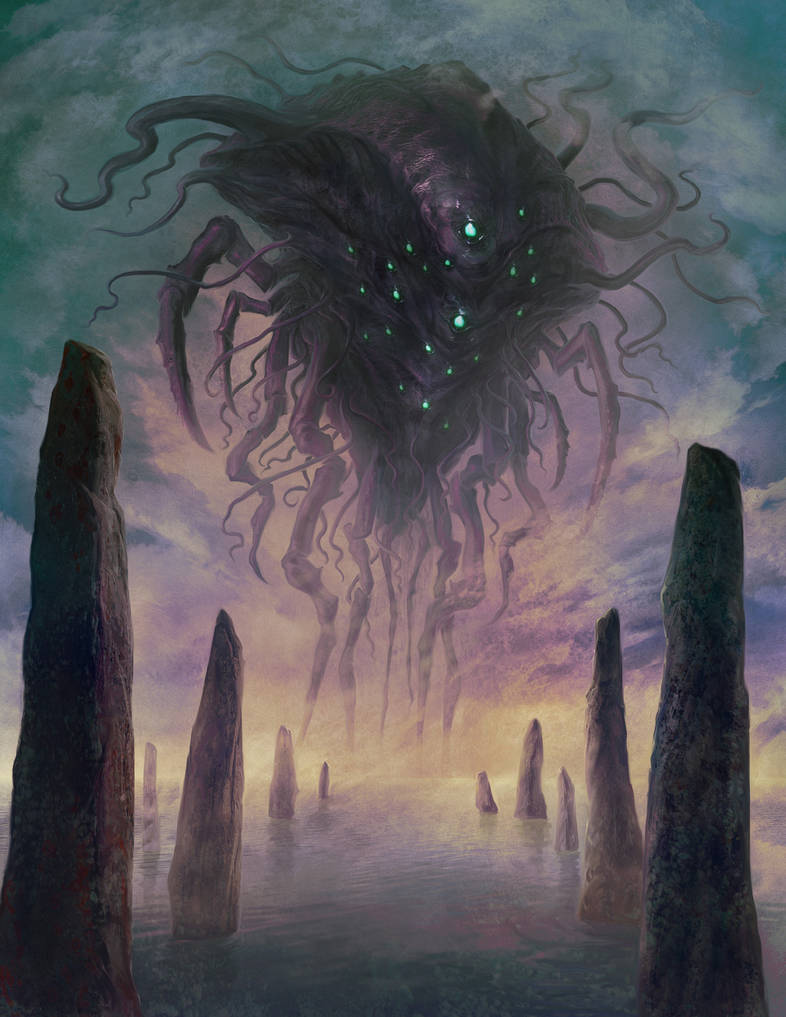
It is said that everything that we know to be The Universe actually exists within the dream of the Idiot Blind God known only as Azathoth, who slumbers churning at the center of Infinity to the tune of daemon flutes. From this eldritch mass of ethereal creation sprang forth 3 entities; the Faceless God Nyarlothep, the void-like entity known as Darkness, and Yog-Sothoth; the All-Seeing All-Knowing One.
The Lurker at the Threshold takes his sibling’s offspring Shub-Niggurath as his mate. The Black Goat of the Woods with a Thousand Young was worshipped across depraved religious sects and occult societies across the cosmos as a perverse fertility goddess, whom Lovecraft viewed in the vein of Astarte, as revealed in his ghostwritten novella, The Mound.
Yog-Sothoth would sire thousands of progeny through his consort, which included the Twin Blasphemies known as Nug and Yeb. Both of them bear a strong resemblance to their mother; writhing masses of tentacles and mouths perched upon furry goat-like hinds. Nug would go on to give birth to Lovecraft’s most-recognized creation via parthenogenesis; he is, in fact, the Father of Cthulu.
Yeb would give birth to Tsathoggua; the Toad-like deity who would come to be known as The Sleeper N’Kai. Yog-Sothoth is also the father of Wilbur Whateley and The Dunwich Abomination through his unholy union with Lavinia Whateley, making him the progenitor of monsters both divine and mortal. And that concludes the surprisingly gruesome family tree section of this video.
Who’s the true Supreme Being of the Cthulhu Mythos, Yog-Sothoth, or Azathoth?
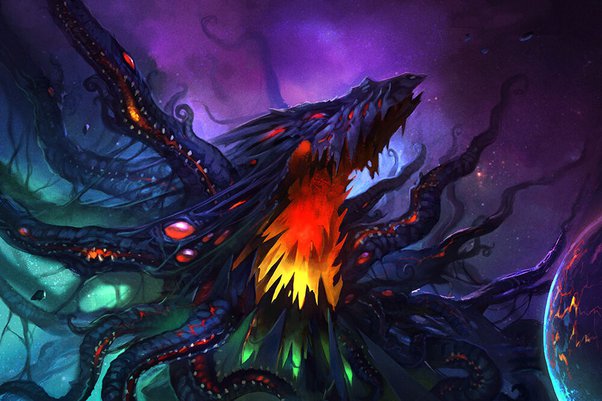
This is a question that has been plaguing Reddit forums for years now. To be completely honest with you, it’s hard to quantify anything Lovecraft does. The whole idea of cosmicism is the fear of the unknown, and its unfathomable extent. We don’t think Lovecraft would personally create a tier list of which gods are more powerful than the others, taking into account how many lasers each party can shoot and from which body part. His Gods aren’t benevolent. They’re indifferent at best and evil at worst.
And all of them are so incomprehensible to the human mind that even a cursory look is enough to drive you absolutely insane. Having said that, he did outline the basic genealogy of his Gods in Letter 617 which was published posthumously. Azathoth is called the Blind Idiot God by Lovecraft for a reason.
He is the Creator of the Multiverse, the alien construct whose dreams we live in. Should Azathoth ever wake up, we will cease to exist in the blink of an eye. That isn’t the case with Yog-Sothoth; though you can argue that the effects of his actions have far more damaging consequences. Being the literal embodiment of Space & Time in Lovecraft’s mythos, he is aware of everything and has used mortals as pawns in the past.
He is one of the only Outer Gods- besides Nyarlothep- to show any semblance of sentient intelligence. He also exists outside of the normal universe, which can mean anything honestly. He could still be a part of Azathoth’s dreamscape still, but something tells us that being the Gate and the Key between realms gives him easy access to the Blind Idiot God’s court.
If Yog-Sothoth can figure out a way to influence the dreams that end up shaping our reality, then Yog-Sothoth would undeniably be the true Supreme Being of the Cthulu Mytho- sorry, the Yog-Sothothory. On the other hand, if the music that keeps Azathoth in his reality-creating-trance even changes slightly and he takes note of it, there is a good chance He might investigate instead of simply following the tune.
And wouldn’t take be an anti-climactic end to the Cthulu Mythos. While Yog-Sothoth is definitely the most-menacing Outer God that is fully cognizant of its existence- yes, including Nyarlothep- we must say that when it comes to being Love Craft’s Supreme Being, the decision is more of a tie.
Like everything else that he has created, Lovecraft loved leaving cliffhangers and stories unfinished to really capture the human condition. Where Azathoth is a Freudian manifestation in his literary pantheon, Yog-Sothoth is decidedly more Jungian (Pronounce: Yoong-ian). It would be impossible to tell who will win a war that will probably never take place, but if we had to hedge our bets, we’d say Yog-Sothoth is more significant to Lovecraftian lore; solely for the fact that he is a deity that Lovecraft seemed to love to highlight. So, yes.
Canonically, Azathoth is the Supreme Being of the Cthulu Mythos, but given his position in the Universe and the powers that he possesses, Yog-Sothoth is a close second if not equal- to the Blind Idiot God Himself. Here’s hoping those flute players can keep up the good work all of the time.
Yog-Sothoth Has Been Referenced In Multiple Forms Of Media
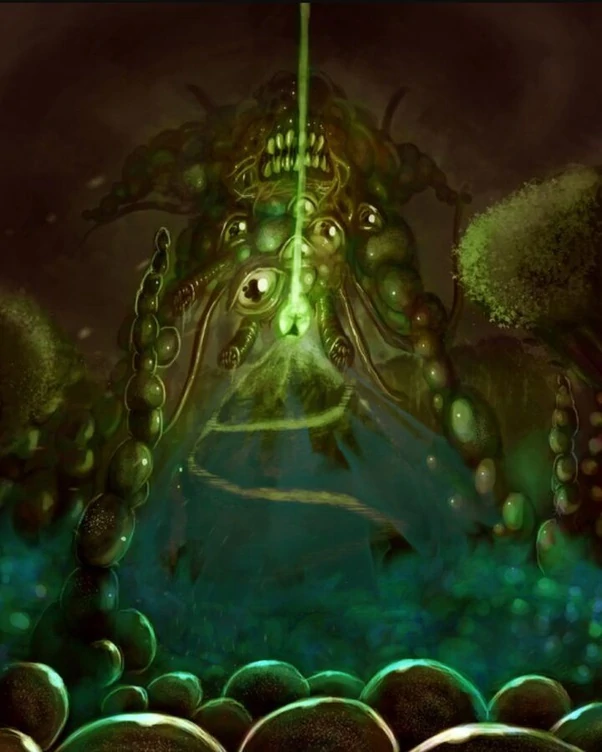
The Lurker at the Threshold has been one of the more adapted characters from Lovecraft’s pantheon. In the British sci-fi television program Doctor Who, Yog-Sothoth appears as the Great Intelligence. The former military strategist of the Great Old Ones, who were the equivalent of the Time Lords in a previous universe, he escaped to the Doctor’s Universe seeking shelter when his universe ended.
In the process, Yog-Sothoth discovered that it had gained god-like powers; and decided to put into motion plans, which it had only been able to simulate before. It launched a universal crusade and undertook millions of campaigns against inhabited planets using conquered races to bolster its forces.
The major difference between this depiction and Lovecraft’s Yog-Sothoth is that the former is portrayed as deliberately petty and evil; whereas Lovecraft’s Yog-Sothoth does what He does to satisfy his own whims. Yog-Sothoth also shows up in the videogame Fate/Grand Order, where he possesses Abigail’s body and starts wrecking the shop until It is stopped by the sorceress Circe. Yog-Sothoth is one of the many Lovecraftian creations who has found a home in the pages of Marvel Comics, where he retains his role as an Outer God; albeit with a bit more…illustrative impact.
Why Yog-Sothoth Deserves More Recognition
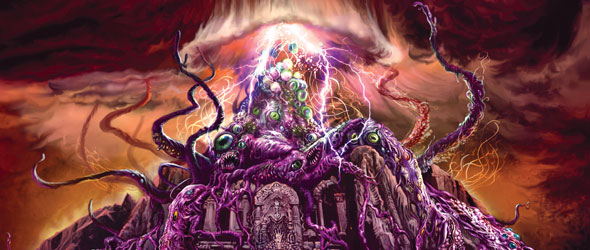
Lovecraft is notorious for using phrases and verbiage so ridiculously convoluted that it has become a comedic part of his otherwise controversial legacy. What cannot be disputed is that Yog-Sothoth is one of his best, most-terrifying creations to date. The very fact that Yog-Sothoth is in full control of his faculties and is aware of everything that is happening all the time, makes him such an unsettling figure.
Though he isn’t an inherently evil (or benevolent) deity, he recognizes willpower when he sees it, and has the power to drive that individual mad within a microsecond anyway. Apart from the Dreamer of R’lyeh, Yog-Sothoth is a character intricately linked to Lovecraft’s legacy and has come to define it for better or worse.
Now, whatever you do, make sure you don’t try any funny business and get some esoteric ideas of your own after watching this idea; you should know by now, it never ends well for anyone, especially the protagonist; aka you.
